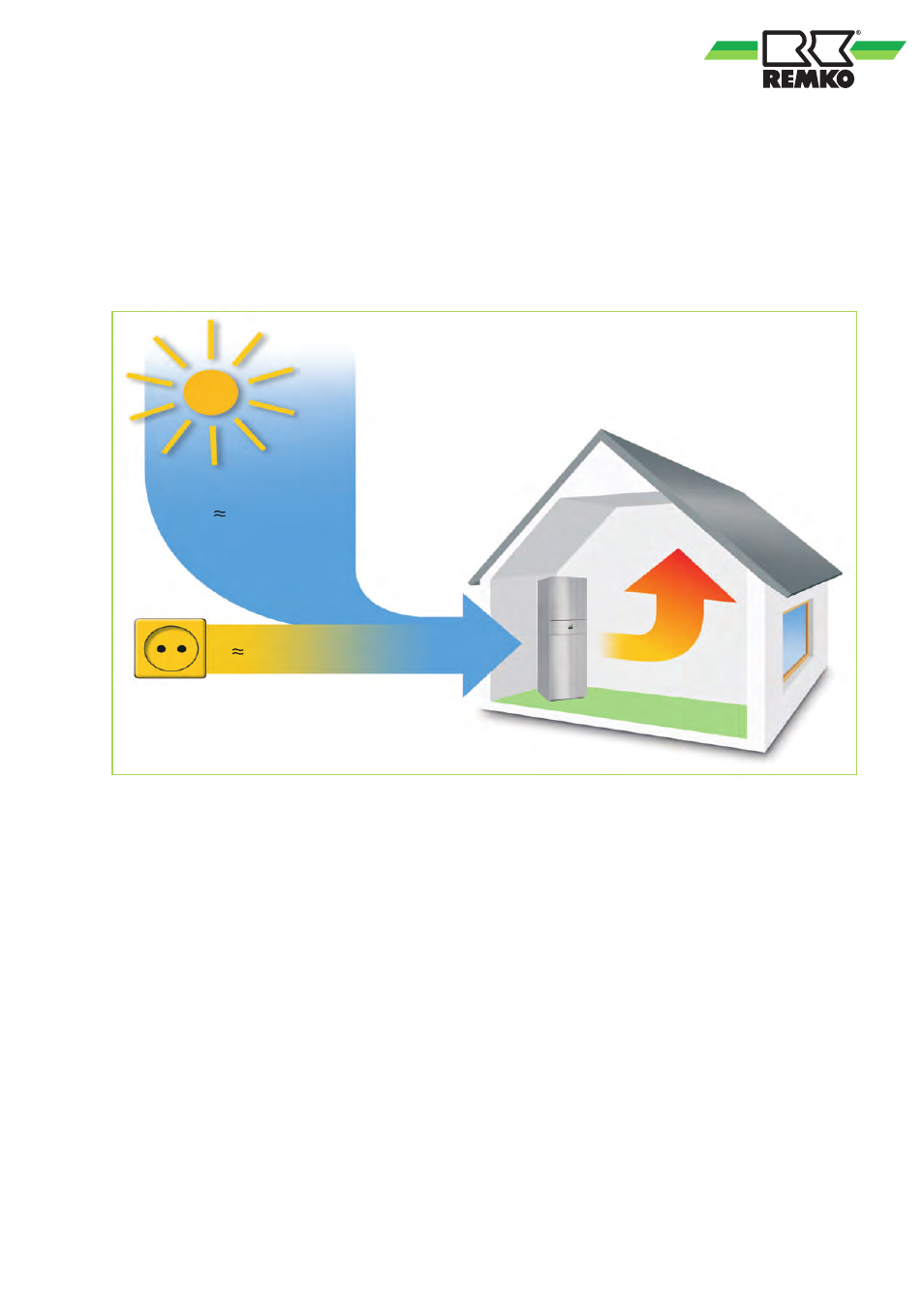3 structure and function, 1 the heat pump in general, Structure and function – REMKO WKF 85 User Manual
Page 29: The heat pump in general

3
Structure and function
3.1
The heat pump in general
Arguments for Remko
n
Low heating costs in comparison to oil and
gas.
n
Heat pumps represent a contribution to envi-
ronmental protection.
n
Lower CO
2
emissions in comparison to oil and
gas heating.
n
All models are able to cool as well as heat.
n
Low noise-level of the outdoor unit.
n
Flexible installation due to split system design.
n
Negligible maintenance costs.
75%* of the heat
comes from the air,
free of charge
75%
freesolar energy
from the air
*
25%
electrical drive energy
*
Heating
Fig. 31: Free heat
* The relationship can vary depending on outdoor temperature and operating conditions.
Economical and environmentally-conscious
heating
The burning of fossil-based energy sources in
order to generate power creates severe conse-
quences for the environment. A high percentage of
fossil fuels is also problematic due to the limited
resources of oil and gas and the price increases
resulting from this. For this reason, many people
today are thinking both economically and environ-
mentally-consciously in terms of heating. The
application of heat pump technology enables both
of these concepts to be combined. It makes use of
the energy which is permanently available in the
air, water and soil and converts it into usable
heating energy by means of inputting electrical
energy. Yet in order to generate heat equivalent to
4kWh, only 1kWh of electricity is required. The rest
is made available free-of-charge by the environ-
ment.
Heat source
There are essentially three heat sources that heat
pumps can derive energy from. air, soil and
groundwater. Air heat pumps have the advantage
that air as a source heat is available everywhere in
unlimited quantities that can be used free of
charge. A disadvantage is that the outside air is at
its coldest when the heat requirement is greatest.
Brine heat pumps extract energy from the soil. This
is undertaken in serpentine pipe networks which
are laid approx. 1m deep or placed by means of
drilling. The disadvantage is the large space
requirements for the serpentine pipe networks or
the high cost of drilling. A long-term cooling of
the soil is also a possibility.
29
